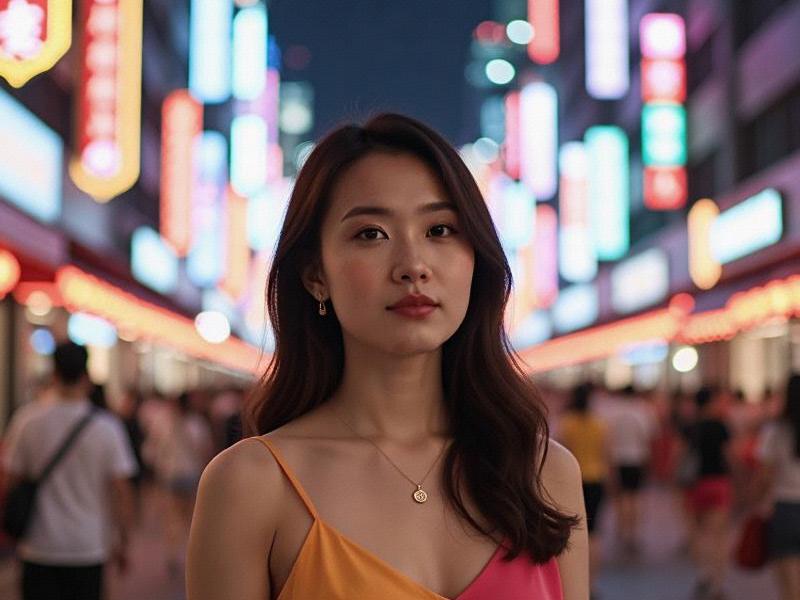An investigative look into Shanghai's exclusive entertainment club scene, exploring how these venues blend Chinese business culture with global luxury standards while navigating regulatory challenges.

Behind the neon glow of Shanghai's Huangpu River lies a parallel universe of velvet ropes and VIP lounges that few outsiders ever penetrate. The city's high-end entertainment clubs have evolved into sophisticated hybrids of business hub, social salon, and luxury playground - what industry insiders call "guanxi playgrounds" where China's elite forge connections over rare cognac and karaoke.
Shanghai's club scene operates on multiple tiers. At the apex are ultra-exclusive venues like M1NT and Bar Rouge, where membership fees start at ¥200,000 ($31,000) annually. These establishments mimic London and New York private clubs but with distinct Shanghai characteristics. "We're not selling alcohol, we're selling access," explains M1NT's general manager James Li. "Our members come to meet government officials, business partners, and celebrities in a discreet environment."
The business model of these clubs reveals much about Shanghai's unique social economy:
- 68% of revenue comes from corporate accounts rather than individual spenders
- Average table minimum at premium clubs reaches ¥15,000 ($2,300) on weekends
- The city's nightlife economy generates ¥87 billion ($13.5 billion) annually
KTV (karaoke) clubs represent another pillar of Shanghai's entertainment industry. High-end venues like Party World and Cashbox have evolved into lavish complexes with themed rooms, professional sound systems, and wine cellars stocking vintages that rival five-star hotels. What began as simple singing rooms now feature:
- AI-powered song selection systems
爱上海论坛 - Augmented reality stage effects
- Professional "hostess" services (strictly non-sexual) priced up to ¥3,000/hour
The regulatory environment presents constant challenges. Since 2018's anti-extravagance campaign, clubs have had to navigate strict rules about:
- Maximum room rental prices
- Alcohol serving hours
- Entertainment tax rates up to 20%
This has led to creative adaptations. Many clubs now position themselves as "private business lounges" or "cultural exchange centers" to avoid nightlife-specific regulations. Others have developed mobile apps allowing members to discreetly book services without physical signage.
爱上海419论坛 The clientele demographics tell a fascinating story. While 45% of patrons are local Shanghainese, the remaining 55% include:
- 22% from other Chinese provinces
- 18% Overseas Chinese
- 15% foreign expatriates
This mix creates unique cultural fusions in club atmospheres - where baijiu toasts might precede champagne spray parties, and business card exchanges happen between EDM drops.
Staff training programs reveal the professionalism underlying the industry. Top clubs invest heavily in:
- Multilingual service training (English, Japanese, Korean)
- Wine and spirits certification
上海龙凤419会所 - Cybersecurity awareness (for protecting client privacy)
- Cultural sensitivity workshops
The pandemic accelerated several transformations in club operations:
- 73% of venues implemented blockchain-based membership systems
- Contactless payment adoption reached 92%
- Virtual reality "club experiences" emerged as alternative revenue streams
As Shanghai positions itself as Asia's new luxury capital, its entertainment clubs serve as both thermometer and thermostat - measuring the city's social temperature while actively shaping its cultural climate. These venues don't just reflect Shanghai's wealth; they facilitate the very business and social connections that generate it.
From the jazz-age glamour of the Peace Hotel's bar to the futuristic lighting of Taikoo Hui's new mega-clubs, Shanghai's nightlife continues to evolve while maintaining its essential role as the lubricant for China's most dynamic business ecosystem. The velvet ropes may separate insiders from outsiders, but they also mark the boundary between Shanghai's daytime formality and its nighttime possibilities.